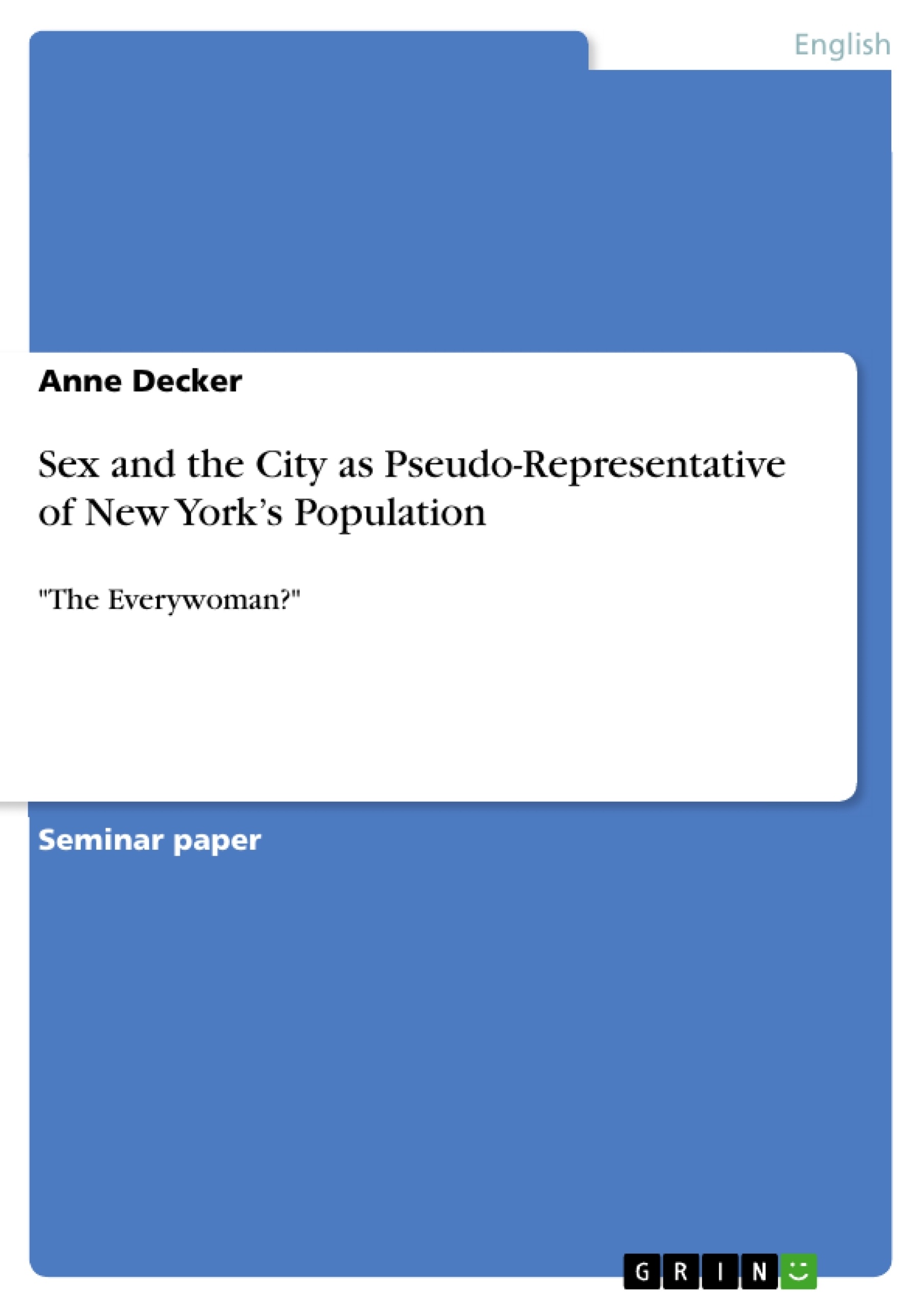This paper will inform about the demographic situation in New York City and the U.S. as a whole as it was during the time SatC aired, namely around the turn of the millennium. What follows will be an analysis of how the characters are presented in the series in a twofold way. First, emphasis will be on the four heroines of the series and their representational status. Then the focus will be on the supporting cast of SatC and it will be shown in how far they, too, are misrepresentative of New York City’s population.
Inhaltsverzeichnis (Table of Contents)
- Introduction
- Diversity in the City of New York
- The People in Sex and the City
- "The Everywoman"- the Series' WEHRFs
- A Cross Section through New York’s Population?
Zielsetzung und Themenschwerpunkte (Objectives and Key Themes)
This paper critically examines the notion that "Carrie and her friends [stand] in as the Everywoman" (Dykes 56) in the HBO series Sex and the City. It analyzes the extent to which the four main characters, Miranda Hobbes, Charlotte York, Samantha Jones, and Carrie Bradshaw, are representative of the female population of New York City, considering their socioeconomic background, sexual orientation, and ethnicity. The paper also examines how the supporting cast contributes to the series' overall cultural representation of New York's diverse population.
- The portrayal of the four main characters as "the Everywoman" in Sex and the City
- The demographic diversity of New York City at the turn of the millennium
- The limited representation of minorities in the series, particularly in terms of race, ethnicity, and class
- The use of stereotypes in depicting characters from different minority groups
- The potential impact of the series' cultural representation on viewers' perceptions of New York and its inhabitants
Zusammenfassung der Kapitel (Chapter Summaries)
The paper begins by introducing the concept of New York City as portrayed in Sex and the City and contrasting it with the reality of the city's diverse population. The paper then explores the demographics of New York City during the time the series aired, highlighting the city's significant minority population and the prevalence of immigrants. The paper proceeds to analyze how the main characters in the series are presented as typical New Yorkers, examining the cinematic and narrative techniques employed to create this perception. It specifically addresses how the characters are portrayed as both observers and participants in the city's life, focusing on the limited perspective they offer. Finally, the paper delves into the supporting cast of characters, exploring the ways in which they represent different minority groups and their stereotypical portrayal. The paper concludes by emphasizing the importance of critical viewing and highlighting the potential impact of the series' cultural representation on viewers' understanding of New York City and its inhabitants.
Schlüsselwörter (Keywords)
Sex and the City, New York City, cultural representation, diversity, minority groups, stereotypes, "Everywoman," WEHRFs, class, ethnicity, sexual orientation, television, HBO, media studies, cultural studies.
- Arbeit zitieren
- Anne Decker (Autor:in), 2013, Sex and the City as Pseudo-Representative of New York’s Population, München, GRIN Verlag, https://www.grin.com/document/264427



